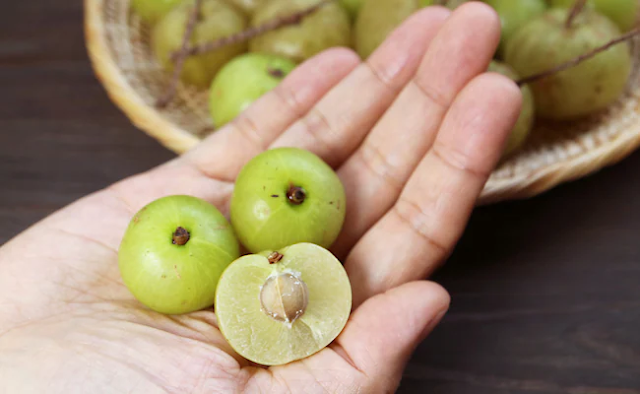Amla also known as Indian gooseberry, is incredibly healthy and has been used in traditional medicine for centuries due to its high nutritional value. Rich in vitamin C, antioxidants, and anti-inflammatory compounds, amla helps strengthen immunity, supports skin and hair health, and promotes heart health by reducing cholesterol levels. It is also known for aiding digestion, managing blood sugar levels, and boosting liver function. Adding amla to your diet regularly can improve overall health, but its strong, tangy flavour can make it challenging to incorporate. Fortunately, there are several delicious and creative ways to add amla to your daily meals. Read on to find out.
Here are 10 tips to help you incorporate amla into your diet
1. Amla juice
Start your day with a small glass of fresh amla juice. It provides a vitamin C boost, supports digestion, and aids in detoxification. You can mix it with honey or dilute it with water if the flavour is too strong.
2. Amla powder in smoothies
Add a teaspoon of amla powder to your morning smoothie for a nutritious kick. The powder blends well with fruits like mango or pineapple, masking the sourness and enhancing the overall nutritional profile of your drink.
3. Amla chutney
Make amla chutney with fresh herbs like mint and cilantro, along with green chilies and spices. It serves as a tasty side dish, adding both flavour and health benefits to your meals.
4. Amla pickle
Try making amla pickle by soaking amla in spices and a small amount of oil. It can be stored for weeks and used as a tangy condiment that pairs well with rice, curries, and flatbreads.
5. Amla candies
For a sweet treat, dried amla candies, often coated with natural sweeteners, offer an enjoyable way to snack on this nutritious fruit. These can be found in health stores or made at home by dehydrating amla and lightly dusting it with jaggery.
6. Amla in salads
Add finely chopped or grated amla to salads for a unique, tangy twist. It goes well with ingredients like carrots, cucumbers, and pomegranate seeds, creating a fresh and nutrient-packed dish.
7. Amla tea
Amla tea, made by steeping fresh or dried amla pieces in hot water, provides a refreshing beverage packed with antioxidants. Add a bit of honey and ginger for additional flavour and health benefits.
8. Amla in yogurt or raita
Mix grated amla into yogurt or raita along with some spices for a cooling side dish that complements spicy meals. This combination helps boost digestion and adds probiotics for gut health.
9. Amla infused water
Add a few slices of fresh amla to your water bottle and sip throughout the day. The water absorbs the nutrients from the amla, providing a refreshing, vitamin-enriched drink.
10. Amla powder in soups and curries
Incorporate a teaspoon of amla powder into soups, stews, or curries. The powder dissolves easily, and its slightly sour flavour enhances the taste while enriching the dish with nutrients.
Incorporating amla into your diet through these varied methods allows you to enjoy its health benefits without overwhelming your palate, making it a versatile addition to your meals.
Post a commentDisclaimer: This content including advice provides generic information only. It is in no way a substitute for a qualified medical opinion. Always consult a specialist or your own doctor for more information.






